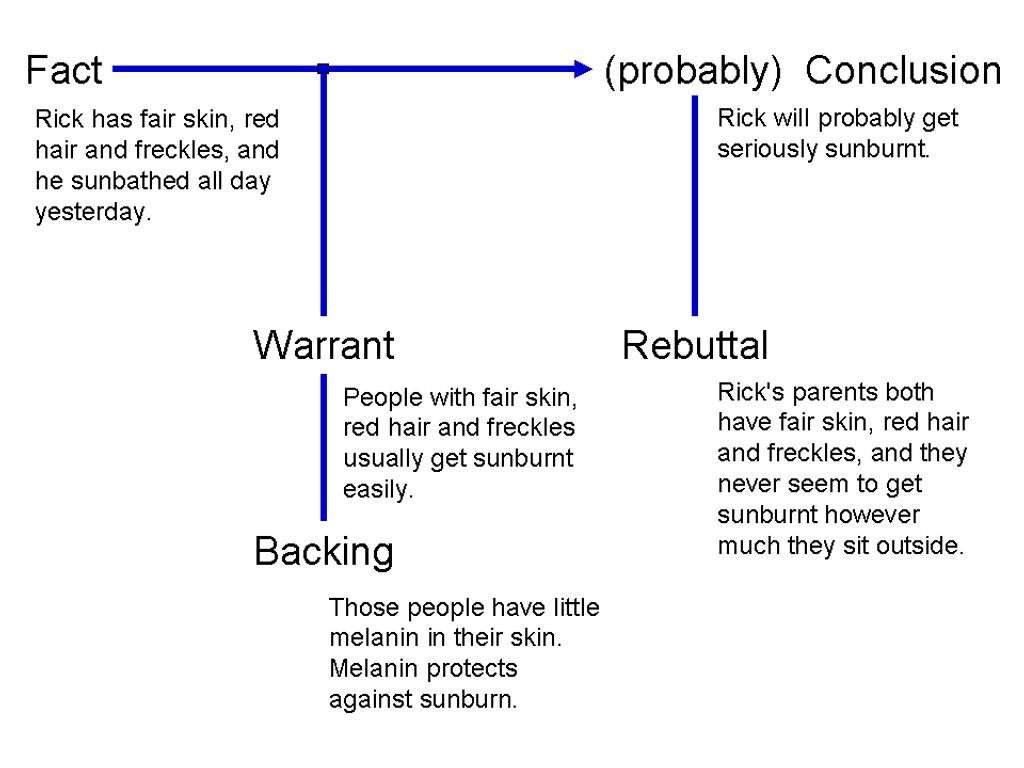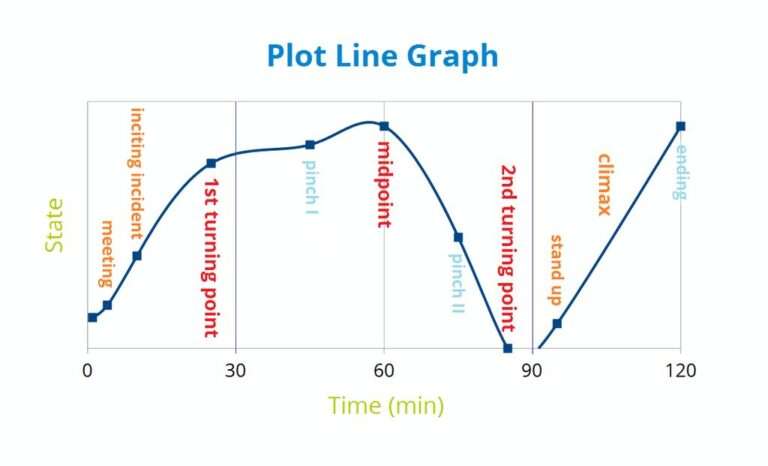The Toulmin Model of Argumentation: Constructing Persuasive Reasoning
Overview
What is the Toulmin Model of Argumentation?
The Toulmin Model of Argumentation is a framework used to construct persuasive reasoning. It provides a systematic approach to analyzing and presenting arguments. The model consists of several components, including claims, evidence, and warrants. By understanding and applying the Toulmin Model, you can effectively structure your arguments and make them more compelling. This model is widely used in various fields, such as law, philosophy, and rhetoric, to develop well-reasoned and persuasive arguments.
Components of the Toulmin Model
In the Toulmin Model of Argumentation, there are several key components that work together to construct persuasive reasoning. These components include the claim, evidence, and warrants. The claim is the main argument or statement being made, which serves as the foundation for the entire argument. Evidence plays a crucial role in supporting the claim by providing factual information, examples, or expert opinions. Warrants, on the other hand, are the underlying assumptions or reasoning that connects the evidence to the claim. It is important to evaluate the strength and validity of each component to ensure a convincing argument. By understanding and utilizing these components effectively, you can construct a compelling and persuasive argument. Unifire can help you streamline the process of constructing persuasive reasoning by providing tools and resources to find and evaluate evidence, identify implicit warrants, and strengthen your overall argument. Take advantage of Unifire’s features to enhance the effectiveness of your arguments and achieve your persuasive goals.
Importance of the Toulmin Model
The Toulmin Model of Argumentation, also known as the Toulmin Method, is a powerful tool for constructing persuasive reasoning. It provides a structured framework that helps individuals present their arguments effectively and logically. By breaking down arguments into different components, such as claims, evidence, and warrants, the Toulmin Model allows for a comprehensive analysis of the strengths and weaknesses of an argument. This is particularly important in today’s world, where the ability to communicate and persuade others is crucial. Whether you are a student, a professional, or someone who engages in debates and discussions, understanding and utilizing the Toulmin Model can greatly enhance your persuasive skills and increase the effectiveness of your arguments. By incorporating this model into your reasoning, you can present your ideas in a clear, organized, and convincing manner, ultimately leading to more successful and impactful communication.
Claim
Understanding the Concept of a Claim
In the Toulmin Model of Argumentation, a claim is a statement or proposition put forth as the main point of an argument. It is the central idea that the arguer wants the audience to accept or believe. Claims can be classified into different types, such as factual claims, value claims, and policy claims. Evaluating the strength of a claim involves considering the evidence and reasoning supporting it. A strong claim is one that is well-supported by credible evidence and logical reasoning. Understanding the concept of a claim is crucial in constructing persuasive reasoning and effective arguments.
Types of Claims
The Toulmin Model of Argumentation recognizes three main types of claims: fact, value, and policy. A fact claim asserts that something is true or false, based on evidence and reasoning. A value claim expresses a judgment about the worth or morality of something, and it is subjective in nature. A policy claim proposes a course of action or a solution to a problem. Each type of claim requires different types of evidence and reasoning to support it. Evaluating the strength of a claim involves considering the quality and relevance of the evidence, the logic of the reasoning, and the credibility of the source. It is important to critically analyze claims to ensure they are well-supported and valid. To construct persuasive reasoning, it is crucial to understand the different types of claims and how to evaluate their strength. By mastering this skill, you can effectively present your arguments and convince others of your viewpoint. If you want to learn more about constructing persuasive reasoning, check out Unifire, a platform that offers resources and guidance on argumentation techniques. With Unifire, you can enhance your persuasive skills and become a more effective communicator.
Evaluating the Strength of a Claim
When evaluating the strength of a claim, it is important to consider the supporting evidence. Supporting evidence plays a crucial role in persuading the audience and convincing them of the validity of the claim. It provides concrete facts, examples, and expert opinions that support the main argument. Without strong supporting evidence, a claim may appear weak and unsubstantiated. Therefore, it is essential to carefully evaluate the quality and relevance of the supporting evidence before accepting the claim as valid. By critically examining the evidence, considering its source, and assessing its credibility, you can determine the strength of a claim and make informed judgments. Remember, a strong claim backed by solid supporting evidence is more likely to be persuasive and compelling to your audience.
Evidence
Finding and Evaluating Evidence
When it comes to finding and evaluating evidence, it is important to prioritize depth over high-level explanations. In order to construct persuasive reasoning, it is crucial to comprehensively explore the available evidence and analyze its relevance and reliability. Types of evidence can vary, including statistics, expert opinions, case studies, and personal anecdotes. It is essential to critically evaluate the quality of the evidence by considering factors such as the credibility of the source, the recency of the information, and the presence of any biases. By effectively using evidence that is relevant and reliable, you can strengthen your argument and increase its persuasiveness. Opinion plays a significant role in the evaluation of evidence, as it can influence the interpretation and acceptance of the information. Therefore, it is important to approach opinions with caution and consider them within the broader context of the argument. To enhance your ability to find and evaluate evidence, consider using tools like Unifire, which can provide valuable insights and save you time in the research process.
Using Evidence Effectively
In order to construct persuasive reasoning using the Toulmin Model of Argumentation, it is crucial to understand how to use evidence effectively. Evidence plays a vital role in supporting the claim and convincing the audience. There are various types of evidence that can be utilized, including statistical data, expert opinions, anecdotal evidence, and case studies. When finding and evaluating evidence, it is important to consider its relevance, credibility, and accuracy. Additionally, using evidence effectively involves properly contextualizing and explaining the evidence to make it clear and compelling for the audience. By presenting strong and well-supported evidence, you can increase the persuasive power of your argument. Remember to always consider the counterarguments and address them with counter-evidence. To use evidence effectively, follow these steps:
- Identify the type of evidence that best supports your claim.
- Conduct thorough research to find credible and relevant evidence.
- Evaluate the quality and reliability of the evidence.
- Properly introduce and explain the evidence in your argument.
- Address counterarguments with counter-evidence to strengthen your argument.
To learn more about constructing persuasive reasoning using the Toulmin Model of Argumentation, visit Unifire for comprehensive resources and tools that can help you improve your argumentation skills.
Warrants
Definition and Role of Warrants
The Toulmin Model of Argumentation defines warrants as the underlying assumptions or principles that connect the claim and evidence in an argument. Warrants act as the logical bridge that supports the validity of the argument. They provide the reasoning behind why the evidence supports the claim. Identifying implicit warrants is crucial in understanding the full context of an argument and evaluating its validity. When evaluating the validity of warrants, it is important to consider if they are based on sound reasoning and if they are relevant to the specific argument. Strong warrants provide a solid foundation for persuasive reasoning, while weak warrants can undermine the credibility of an argument. Understanding the role of warrants is essential for constructing effective and persuasive arguments. By recognizing and evaluating the warrants used in an argument, you can strengthen your own reasoning and engage in more meaningful discussions.
Take your persuasive skills to the next level with Unifire! Unifire is a powerful tool that helps you analyze and construct persuasive arguments using the Toulmin Model. With Unifire, you can easily identify and evaluate the components of an argument, including claims, evidence, and warrants. Start using Unifire today to enhance your persuasive reasoning and make a compelling impact in your communication.
How to Identify and Evaluate Warrants:
- Identify the claim and evidence: Start by understanding the main claim and the evidence provided to support it.
- Examine the reasoning: Analyze the logical connection between the claim and evidence. Look for underlying assumptions or principles that connect the two.
- Evaluate relevance and soundness: Consider if the warrants are relevant to the specific argument and if they are based on sound reasoning.
- Consider counterarguments: Assess if the warrants address potential counterarguments and provide a strong defense for the claim.
- Assess the overall strength: Evaluate the overall strength of the warrants in supporting the claim and the argument as a whole.
By following these steps, you can effectively identify and evaluate warrants, strengthening your ability to construct persuasive arguments.
Identifying Implicit Warrants
When analyzing arguments, it is crucial to identify implicit warrants. These are the underlying assumptions or beliefs that support the connection between the claim and the evidence. Implicit warrants are not explicitly stated but can be inferred from the context. Identifying implicit warrants allows us to uncover the hidden reasoning behind an argument and evaluate its validity. To identify implicit warrants, carefully examine the language used, look for patterns or recurring themes, and consider the broader context of the argument. It is important to recognize that implicit warrants can greatly influence the strength and persuasiveness of an argument. By understanding and evaluating implicit warrants, we can engage in more informed and critical debate. It is essential to be aware of the implicit warrants present in arguments to ensure a well-rounded analysis and foster constructive discussions.
Evaluating the Validity of Warrants
Now that you understand the role of warrants in the Toulmin Model of Argumentation, it is crucial to evaluate the validity of these warrants to ensure the strength of your argument. Bloomberg, the renowned financial news and data company, provides a comprehensive platform for evaluating the validity of warrants in various industries. By utilizing Bloomberg’s extensive database and analytical tools, you can assess the credibility and reliability of the warrants used in your argument. It is important to consider the source of the warrants, the supporting evidence, and the logical reasoning behind them. Evaluating the validity of warrants allows you to strengthen your argument and enhance its persuasiveness. Remember, the goal is to present a well-supported and convincing case to your audience. Take advantage of Bloomberg’s resources and expertise to evaluate the validity of your warrants and craft a compelling argument.
Conclusion
In conclusion, Unifire is the ultimate tool for extracting summaries, keywords, and titles from your podcast and repurposing your content. With Unifire, you can save time and effort by automating the process of extracting valuable information from your podcast episodes. Whether you’re a content creator, marketer, or podcaster, Unifire can help you streamline your workflow and maximize the impact of your content. Visit Unifire today to learn more and start optimizing your podcast content!








